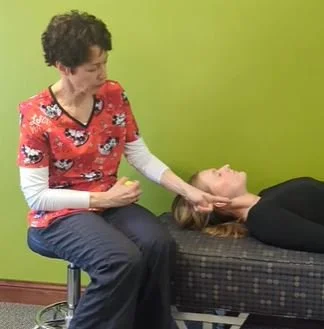I am almost seeing the light at the end of the tunnel on my weather app. We have literally been rolling in form 1 storm system into the next for 10 days now, and while I am quite exhausted by the amount of wet dog smells and residues that this has brought into my house, I realize this is a minor problem compared to what some of our patients have been experiencing in that timeframe.
Some patients have conditions that are significantly flared up by sudden severe or prolonged drop in barometric pressures that are associated with storm systems. It used to be considered an "old wives tales"that people could predict upcoming bad weather with the arthritic joints. Modern science has finally caught up with that erroneous assumption. We now know that some of the sensory receptors that are found in many of our joint capsules, whose job it is to send off positional signal to our balance centers, can be expressed in much higher numbers in previously damaged joints, and can have a lower firing threshold over time. This essentially can turn a body part into a mini barometer, and at times more accurate than the weatherman.
The 2 patient populations that seem to be most affected by these barometric pressure changes (there are actually several more but I do encounter them much less commonly), are patients with posttraumatic or osteoarthritis related joint hypersensitivity, as well as patients with migraine disorders.
The scenario often goes as follows: patient has had a serious trauma to the spine or an extremity joint like the knee or wrist, (trauma can be physical trauma or something like surgery), and noticed over time that the joint pain seems to flareup independent of any normally aggravating activities, but seem to coincide with a 12 – 36 hour window before a major storm event. For migraine patients, every other trigger being equal, they are much more likely to start a migraine cycle prior to a major weather event, or with successive storms as we've had recently. The mechanism of action in migraine patients is a little different than for patients with posttraumatic joint sensitivity. Many migraine patients have poor autonomic function, leading to abnormal vasodilation and vasoconstriction. For migraine patients, especially female patients who have a tendency to experience lower blood pressure, the low barometric pressure increases vasodilation, slightly lowers blood pressure, which can be enough of a drop in oxygen concentration in cerebral blood flow to push them over into the beginning of a migraine. Quite interestingly, I recently polled several of my chronic female migraine patients who have barometric sensitivity to find out what the cutoff seems to be for them, (you can find out the barometric pressure on just about any weather app), and it's been remarkably consistent between 28 and 30 mg.
The bigger question looming in everyone's mind is what you can do about it. It's no fun living at the whim of storm systems.
There is no great miracle solution for your body having rewired your peripheral sensory system, but there are couple of tools in the toolbox that may be useful to try
First, most of our chiropractic patients have empirically figured out that scheduling a chiropractic visit in the early phase of the symptoms will ward off the severity of the pain flare up. The chiropractic adjustments help mitigate the amount of fluid pooling that comes with loss of normal joint motion, normalizes joint position sensor activity, and in the case of migraines, stimulates a better autonomic feedback loop.
For joints including the spine, light compression can offset the drop in barometric pressure. Appropriate compression sleeves seem to be helpful for a lot of people. You have to find one that fits comfortably on the body area affected, one that you can wear during your normal activities without problem. There are many brands available and the scope of this blog is not to list them, but I have consistently heard good results from patient to use the copper infused compression type. They do have some options for the spine such as trunk sleeves, which will fit over the low back, and they often have compression base layers that can do the same thing. I would have to say that the cervical spine can be the harder area to fit with a good compression support.
Things are much trickier for patients with migraine disorders. However I would say that compression is also a really useful to to maintain blood pressure, and can be used in the form of compression stockings in the lower extremity (preventing fluid pooling in the lower extremity and maintaining normal circulatory volume), as well as a compression shirts. In addition, anything that can help maintain blood pressure above 100 systolic is helpful: increasing natural salt and electrolytes intake every 2 or 3 hours with proper hydration at the beginning of a migraine cycle, nitric oxide supplementation to improve peripheral delivery of oxygen to the brain, certain of autonomic/vagal breathing exercises to improve proper vasoconstriction feedback loop. Some patients seem to respond favorably to caffeine -containing product to temporarily increase the blood pressure.
While we wait for the last of the storms to clear up, think about how you may be able to incorporate some of these new tools in self care to be less susceptible to the whims of the weather.


















